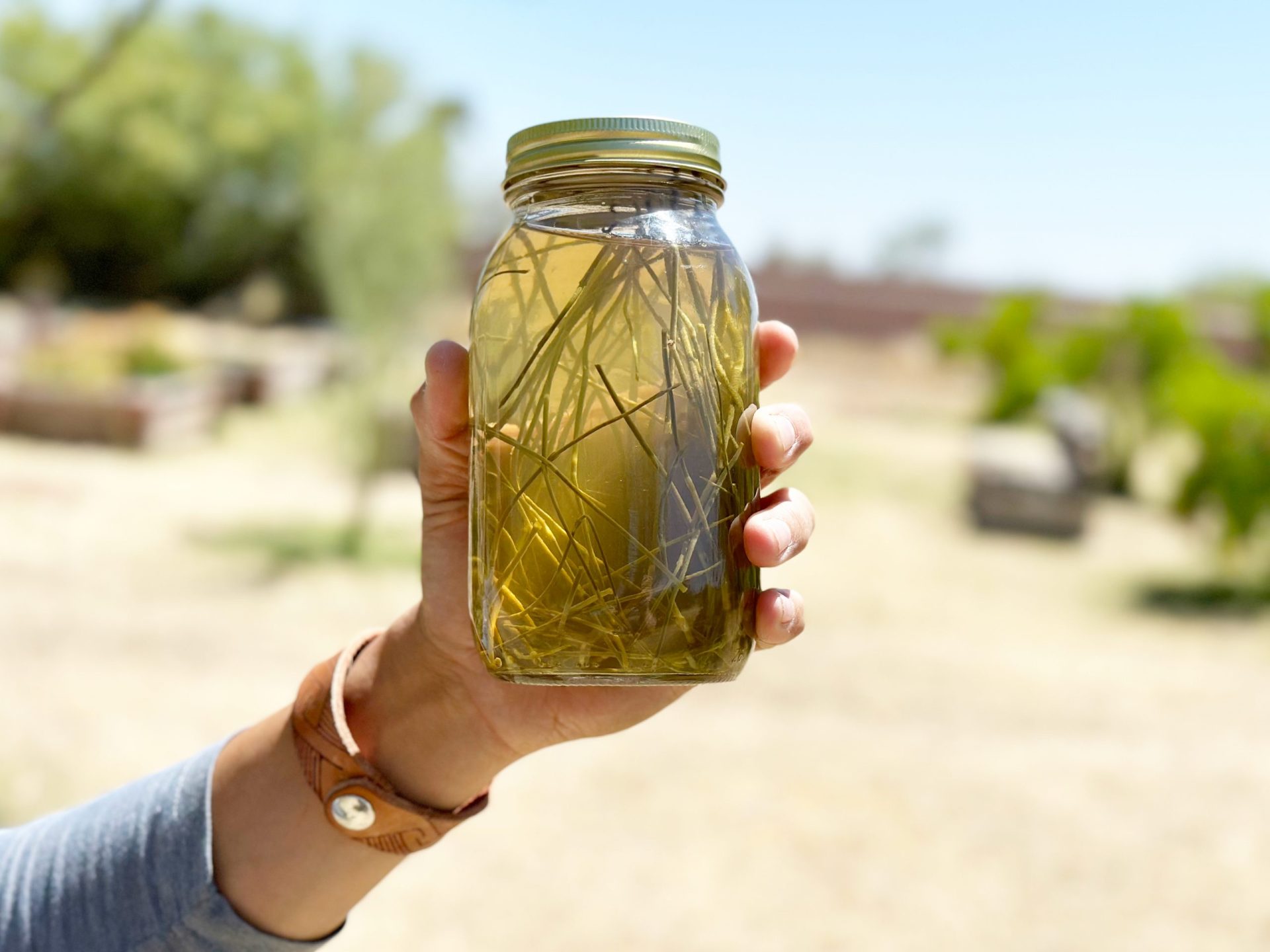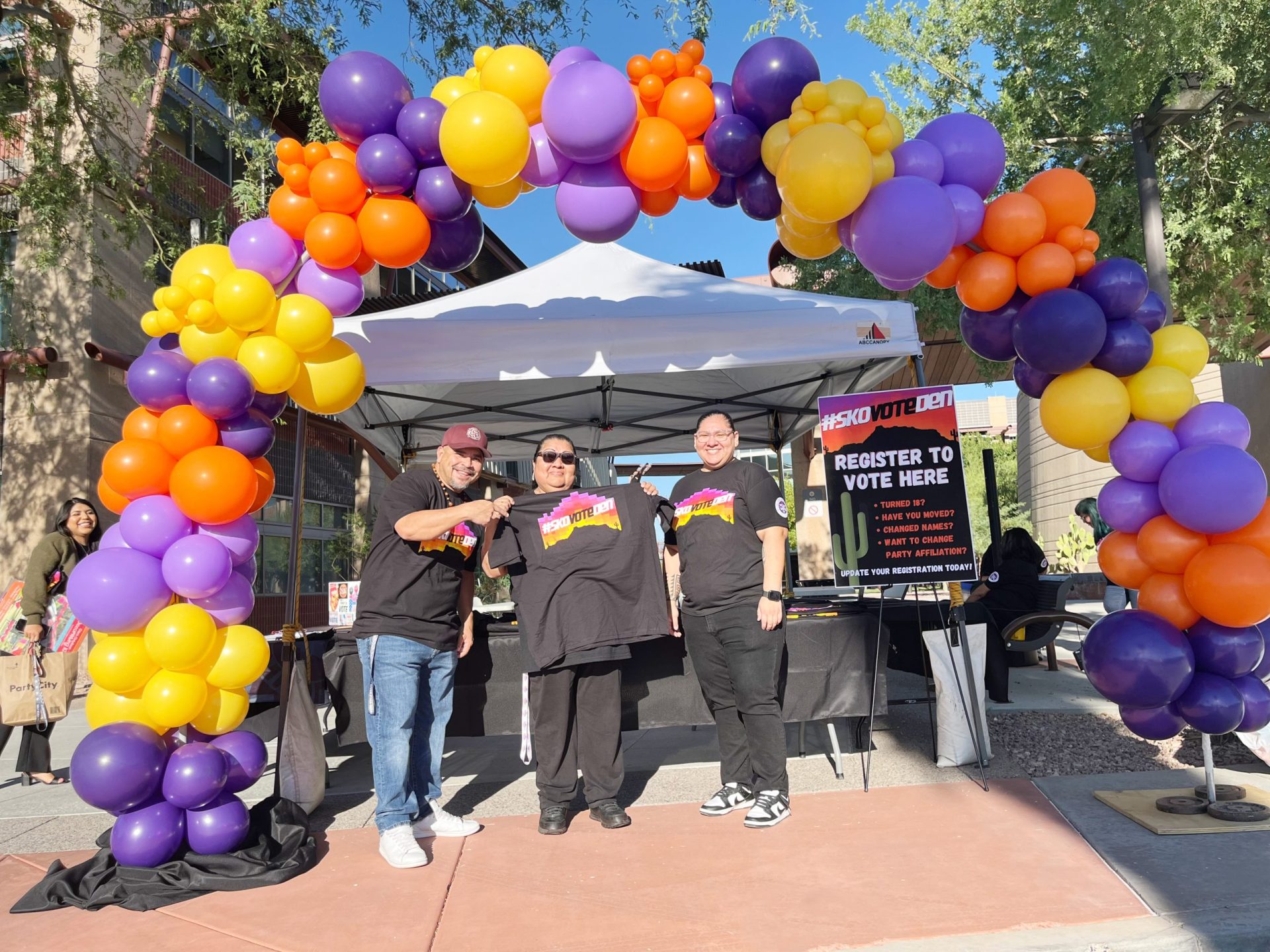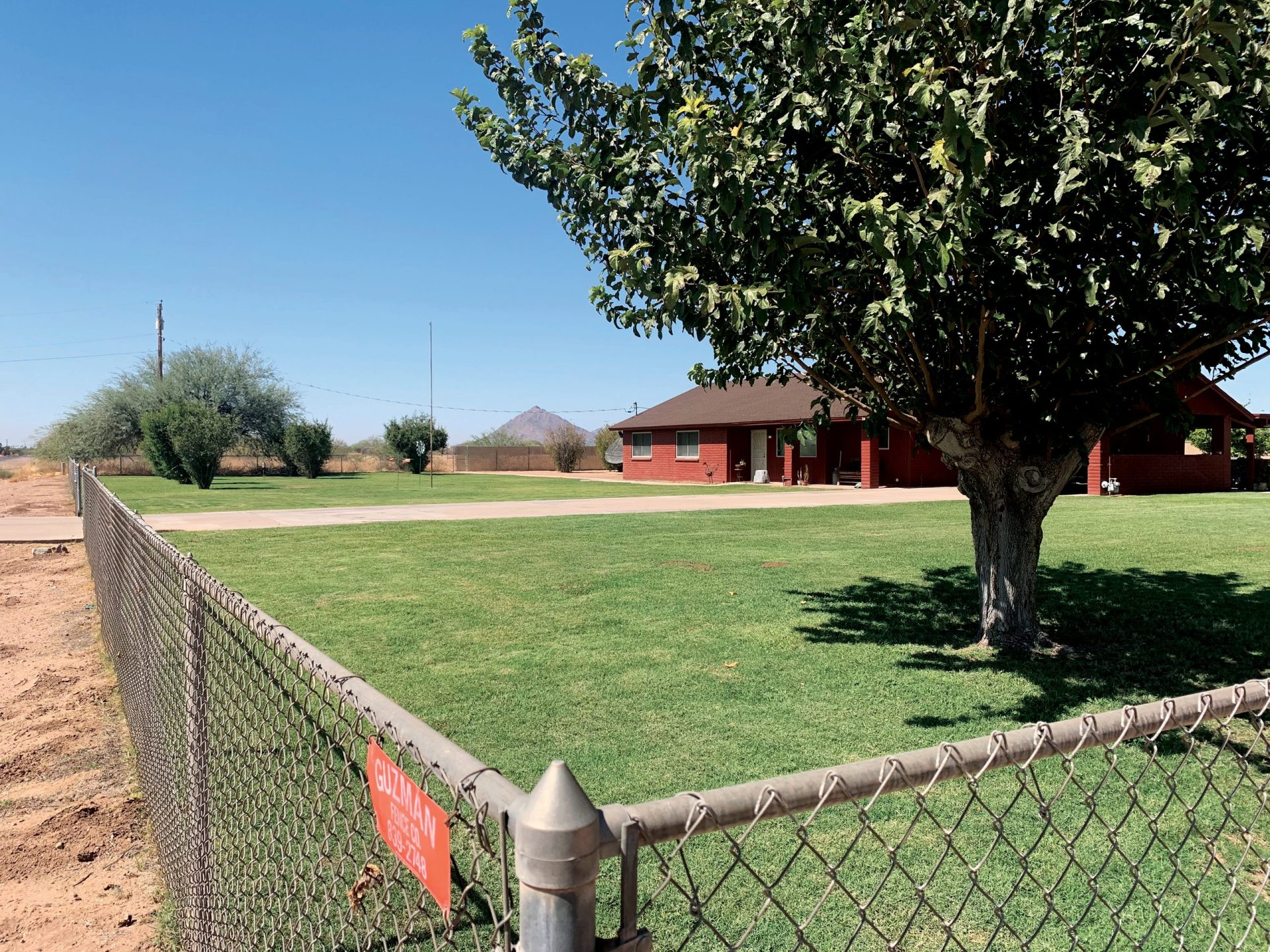VIEWS: 5406
May 31, 2023Traditional O’odham Plants: Desert Ephedra
As more O’odham and Piipaash members of the Salt River Pima-Maricopa Indian Community are going back to their roots and getting to know more about the traditional uses of the plants on the land, O’odham Action News spoke with community garden technician Amson Collins to help educate the Community about these plants.
In January 2022 we talked with Collins about reconnecting with desert plants, and we featured creosote (‘iivse in Piipaash and Ṣegoi in O’odham), which grows naturally all over the Sonoran Desert.
This time we’re talking about the ephedra plant, which can be found in coarse soils near washes in O’odham communities and elsewhere throughout Arizona and the Southwest.
Ephedra Plant
Ephedra is a woody shrub with tall, green, leafless stems that contain varying amounts of caffeine and ephedrine, both of which act as stimulants on the central nervous system. The plant is mainly used for making a tea by steeping the stems.
According to the National Park Service, ephedra may have been commonly used by Mormon pioneers and Native Americans alike, resulting in its nicknames “Mormon tea” and “Indian tea,” among others.
The University of Arizona Campus Arboretum said that the harvest season for the plant is early spring.
According to the arboretum, ephedra traditionally has been used medicinally to treat a variety of illnesses and symptoms, including diabetes, pneumonia, kidney problems, venereal diseases and stomach issues. The stems have also been boiled and applied topically to wounds and sores.
About a half-dozen species of ephedra grow in the Sonoran Desert region, including Ephedra trifurca, Ephedra aspera and Ephedra viridis.
Harriett Reid, lead pharmacy technician and 2024 PharmD candidate at the River People Health Center, said that there are risks associated with plants used as traditional remedies.
“Herbal medicines are not regulated by the [U.S. Food and Drug Administration], so there is a risk of numerous side effects and/or toxicities, including cardiovascular events and renal (kidney) or hepatic (liver) toxicities,” said Reid.
According to the National Institutes of Health National Center for Complementary and Integrative Health, you should not consume the plant if you are pregnant or breastfeeding.
A study published in Annals of Internal Medicine, shows that ephedra products in general make up only 1% of herbal supplement sales in the U.S., but they are responsible for 62% of herb-related reports to poison control centers.
In February 2004, the FDA issued a final rule prohibiting the sale of dietary supplements containing ephedrine alkaloids (ephedra) because the supplements present an unreasonable risk of illness or injury.
Traditional O’odham Use of Ephedra
The most commonly known name for the plant in the Community is ku:pag in O’odham. Kelly Washington, director of the SRPMIC Cultural Resources Department, said that he doesn’t know many Piipaash who remember the name of the plant, but it’s something like ’iishiu or ’iishu in Piipaash.
Collins said that this particular plant is often mistaken for Chinese ephedra (Ephedra sinica), which is also known as “ma huang,” and while he said the local species is not nearly as harmful as Chinese ephedra, he agrees that people need to use precautions when taking any desert plant for medicinal use.
“Drying the plant weakens [the plant’s effects],” said Collins. “A lot of medicinal plants in the desert are too strong off the bat, and having too much of that can have the opposite effect. You want to [consume the ephedra plant] in moderation.”
Collins said that he learned to dry the fresh green ephedra sticks in a cool, dry place indoors for a week or two. He sweetens the tea with wild honey, and he said the tea makes him feel good and wakes him up.
“The plant has collected all the water from the winter, and they have this nice, new green growth. I also use [ephedra] for [treating] hay fever, asthma and respiratory issues. It will dry you up,” said Collins.
Editor’s Note: This material is provided for informational purposes only and is not medical advice. Consumption of any ephedra plant or product is done at your own risk.







